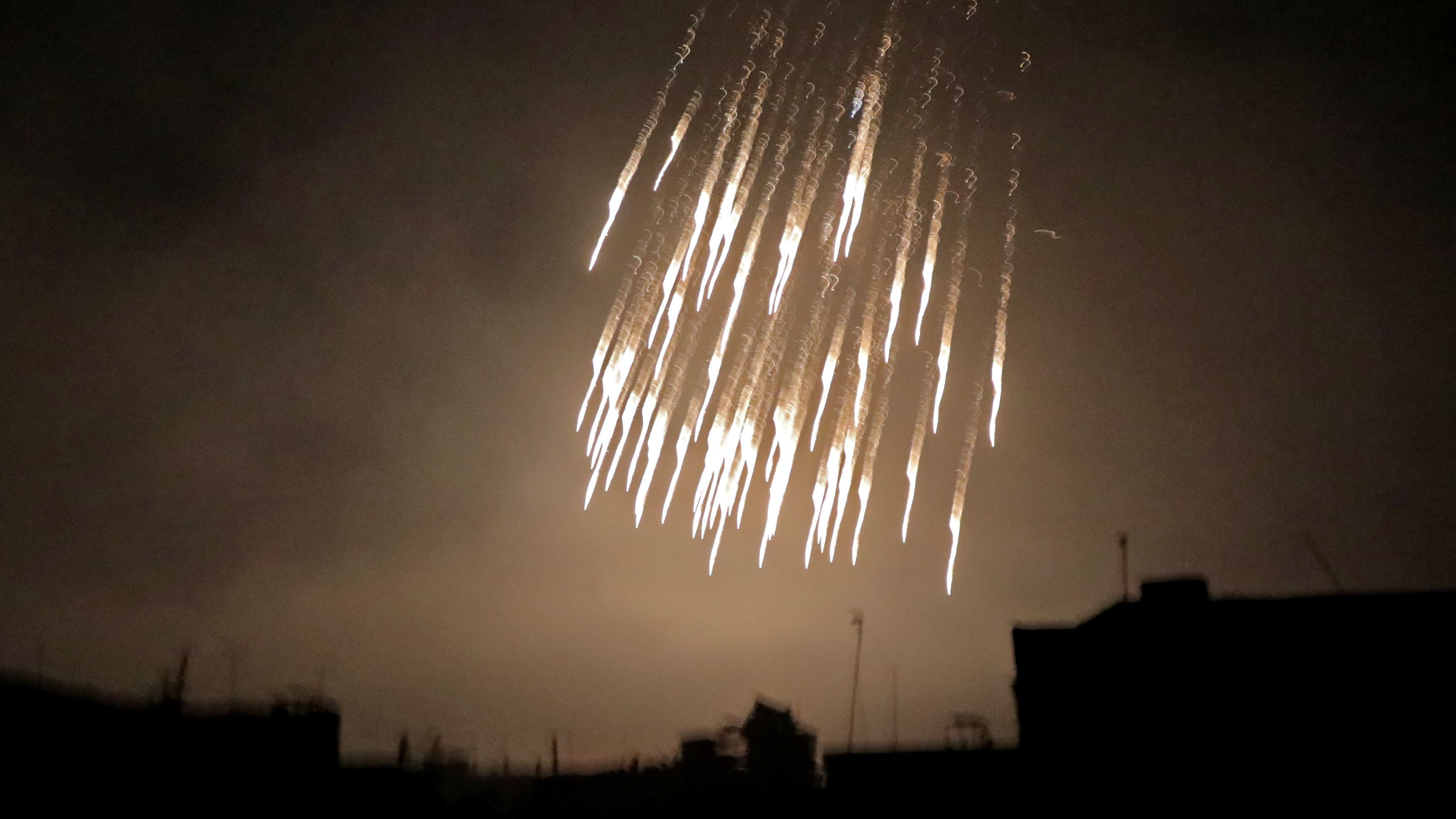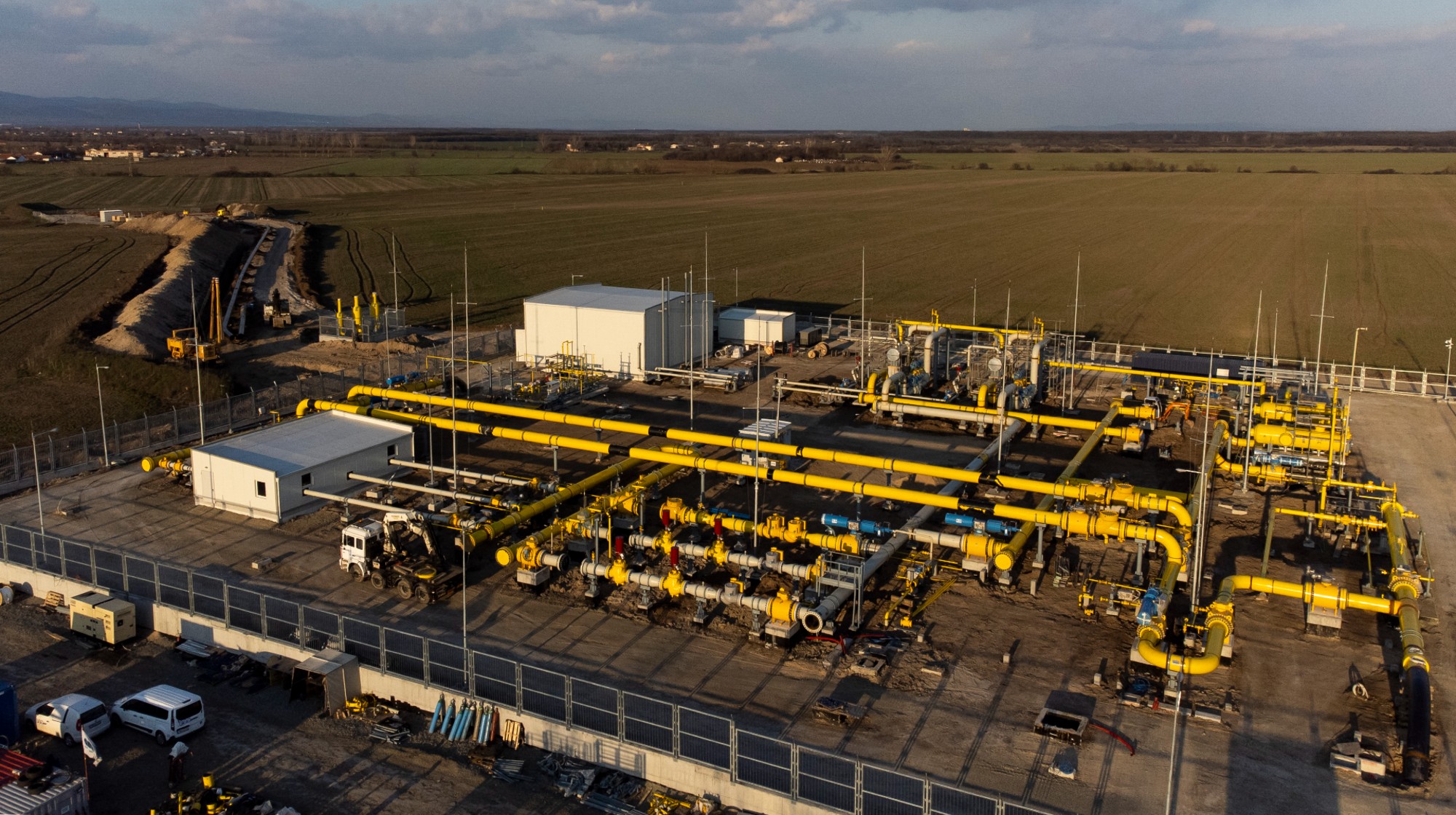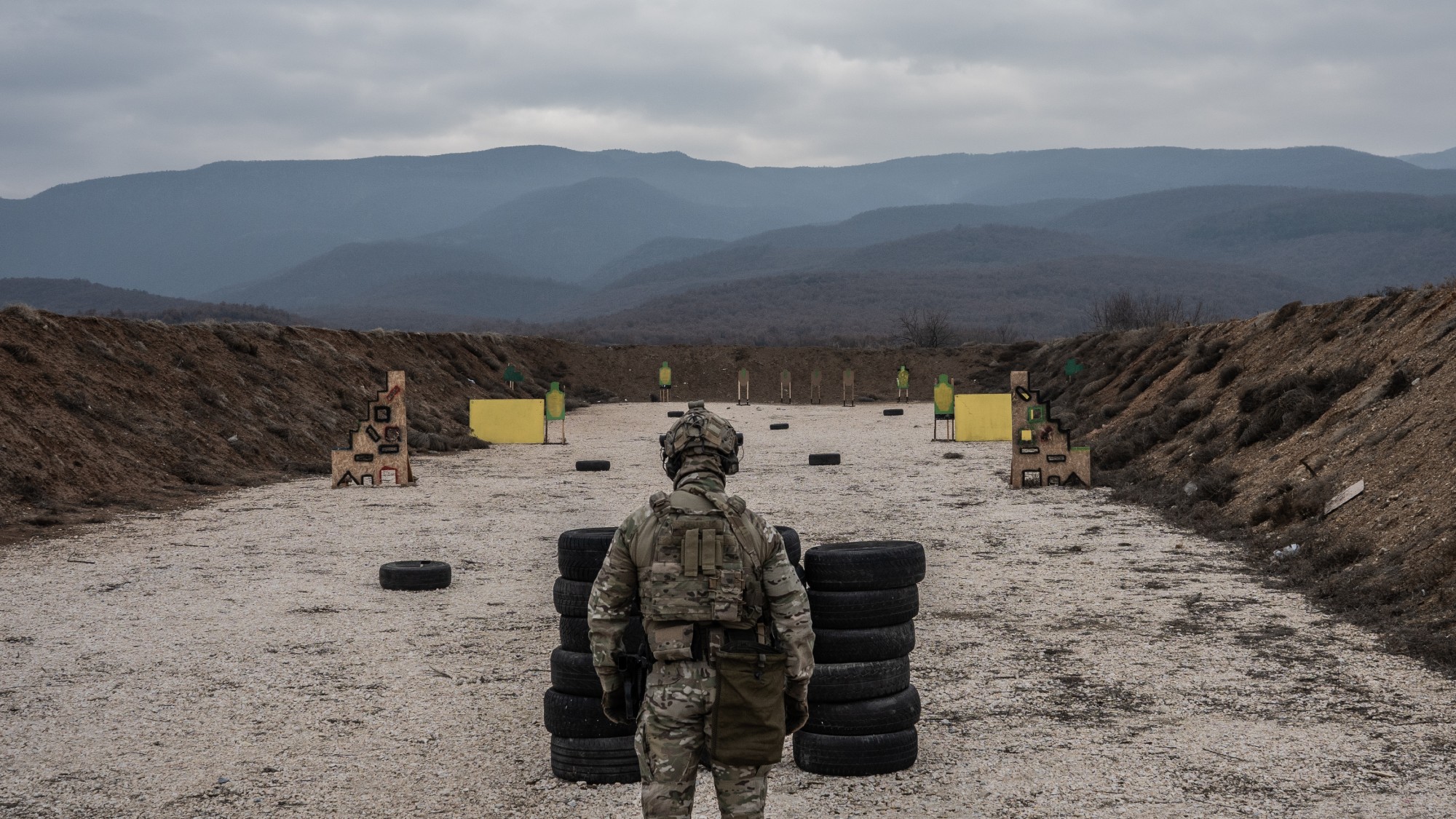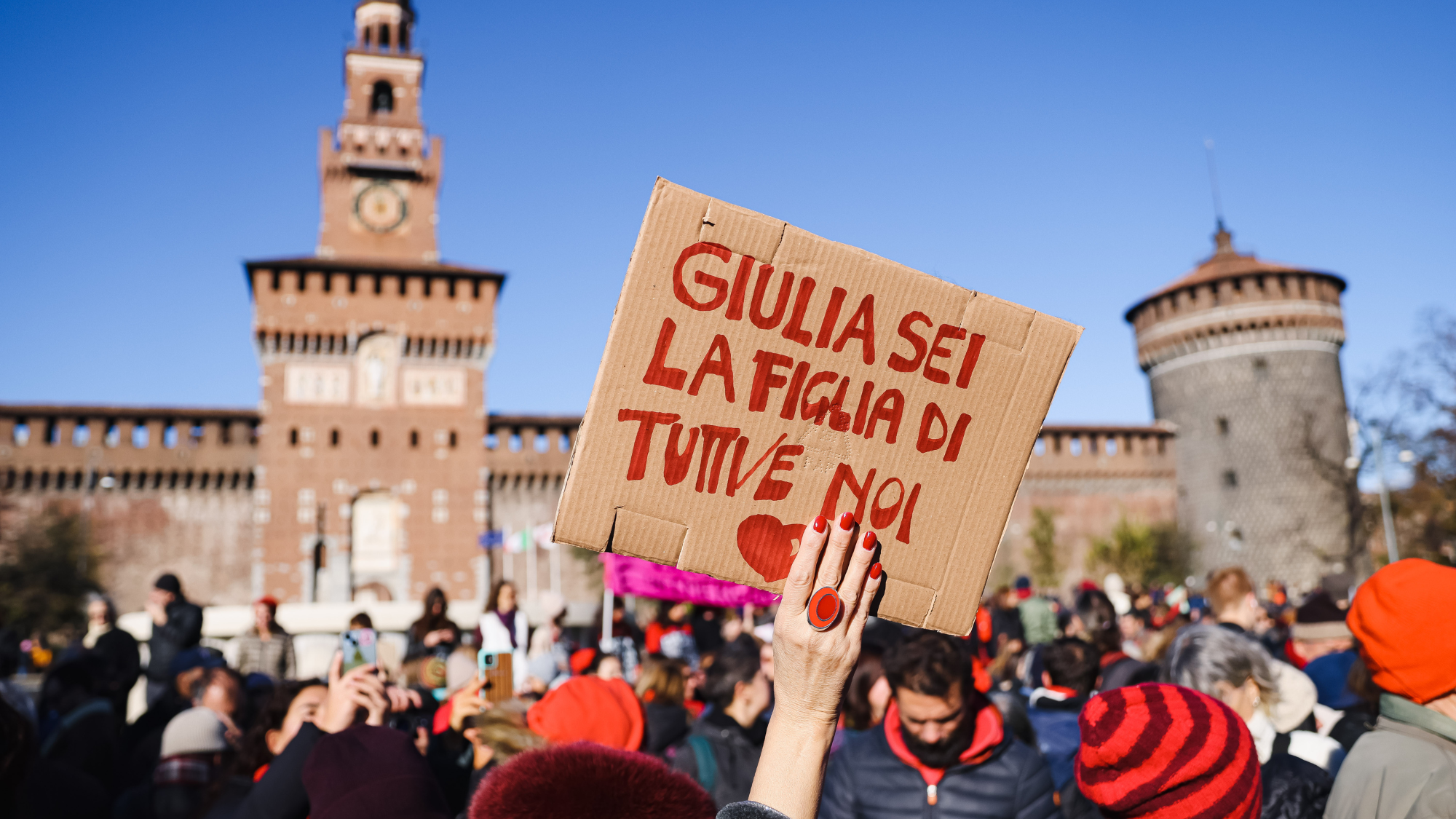What are the phosphorus bombs ‘pummelling’ Ukraine?
Footage shows ‘brightly burning munitions’ launched by Russian forces hitting Mariupol’s Azovstal steelworks

Ukraine has accused Russia of dropping phosphorus bombs on troops who were today evacuated from the Azovstal steelworks in Mariupol after more than 80 days under siege.
In a message on the Telegram messaging app, Petro Andryushchenko, an adviser to the mayor of the besieged port city, alleged that “the occupiers themselves claim that they used 9M22C incendiary rockets with thermite layers” in devastating attacks over the weekend.
“The temperature of the flames is about 2,000 to 2,500 degrees celsius,” he continued. “It is almost impossible to stop the burning.”
The Week
Escape your echo chamber. Get the facts behind the news, plus analysis from multiple perspectives.

Sign up for The Week's Free Newsletters
From our morning news briefing to a weekly Good News Newsletter, get the best of The Week delivered directly to your inbox.
From our morning news briefing to a weekly Good News Newsletter, get the best of The Week delivered directly to your inbox.
Incendiary weapon
Ukrainian officials and humanitarian organisations had voiced fears over “the fate of about 1,000 soldiers” in the Azovstal steelworks, which was “the last holdout of Ukrainian resistance in the occupied port city for over two months”, said The Times. The soldiers, “hundreds of whom are injured”, were facing “dire conditions” and “relentless” bombings prior to their evacuation after 82 days inside the metals factory, the paper reported.
Footage shared online shows “brightly burning” munitions “pummelling” the steelworks and surrounding area, said The Telegraph. “Thousands” of the munitions can be seen in the skies above the “sprawling” complex before “exploding on contact with the ground”.
A British military expert reportedly confirmed that the footage appeared to show “either phosphorus or incendiary weapons”.
According to Human Rights Watch (HRW), phosphorus weapons “produce heat and fire through the chemical reaction of a flammable substance”. Such attacks can “inflict excruciating burns, sometimes to the bone, and can cause respiratory damage, infection, shock, and organ failure”.
A free daily email with the biggest news stories of the day – and the best features from TheWeek.com
The lack of proper medical equipment in a war setting can often “exacerbate the already challenging process of treating serious burns”, the international non-governmental organisation continued. And the fires caused by the weapons “can also destroy civilian structures and property, damage crops, and kill livestock”.
Are they being used in Ukraine?
Mariupol official Andryushchenko’s claim on Telegram is the “latest allegation of chemical weapons use by Moscow in its nearly three-month invasion of Ukraine”, The Times said.
Russia has been accused of using chemical weapons in the Kharkiv region last week, a claim denied by the Kremlin. And in April, British defence sources “said white phosphorus had already been used” in the eastern Donetsk region, the paper added.
President Volodymyr Zelenskyy has also alleged that Moscow has “deployed munitions with white phosphorus on civilians in Ukraine”.
Andriushchenko said on Telegram that specialists would be brought in to assess the attacks on the Azovstal steelworks. “We’ll leave it up to the scientists’ conclusion on whether incendiary or phosphorus bombs were used,” he wrote.
Vladimir Putin’s spokesperson, Dmitry Peskov, told reporters in March that Russia “has never violated international conventions” on the use of prohibited weapons.
The Kremlin has also previously accused Kyiv of deploying chemical weapons against civilians in “false flag” operations, though no evidence has been produced to support this claim.
Are they banned?
Using phosphorus bombs “is not banned outright under international weapons law”, said the i news site, “and many armed forces possess them”. They are often used to “create smokescreens” and “mark targets for air strikes due to the volume of smoke they create”.
But “it is illegal to use phosphorus bombs in civilian settings”, the site continued, and they “are tightly regulated under international law because of their incendiary effects and the potential for them to be used to inflict indiscriminate damage on civilian areas”.
According to Human Rights Watch, “two major loopholes” allow for their continued use. The Convention on Conventional Weapons (CCW), a UN agreement that seeks to ban certain weapons, “excludes certain multipurpose munitions with incendiary effects, notably those containing white phosphorus”.
The convention also “has weaker restrictions for ground-launched incendiary weapons than air-dropped versions” despite “all such weapons cause the same harm”.
The Air Command of Ukraine’s Air Force has claimed that the missiles fired at the Azovstal steelworks “were fired from the Black Sea”, The Telegraph reported.
Is this a war crime?
Proof that Putin’s forces have used phosphorus bombs on civilian areas in Mariupol and other regions of Ukraine “would likely result in intensified accusations” that Russia has committed war crimes, the i news site said.
“It is hard to see what military gains Russia would achieve in unleashing phosphorus bombs on the city, other than to botch evacuation routes for the civilians still trapped there,” the site added.
Russia has “previously been accused of using the chemical against civilians in the Chechen wars of the 1990s and early 2000s, as well as in its campaign in Syria”, The Times reported. But in those conflicts, the Kremlin avoided major international recrimination.
-
 Political cartoons for January 4
Political cartoons for January 4Cartoons Sunday's political cartoons include a resolution to learn a new language, and new names in Hades and on battleships
-
 The ultimate films of 2025 by genre
The ultimate films of 2025 by genreThe Week Recommends From comedies to thrillers, documentaries to animations, 2025 featured some unforgettable film moments
-
 Political cartoons for January 3
Political cartoons for January 3Cartoons Saturday's political cartoons include citizen journalists, self-reflective AI, and Donald Trump's transparency
-
 What will happen in 2026? Predictions and events
What will happen in 2026? Predictions and eventsIn Depth The new year could bring peace in Ukraine or war in Venezuela, as Donald Trump prepares to host a highly politicised World Cup and Nasa returns to the Moon
-
 All roads to Ukraine-Russia peace run through the Donbas
All roads to Ukraine-Russia peace run through the DonbasIN THE SPOTLIGHT Volodymyr Zelenskyy is floating a major concession on one of the thorniest issues in the complex negotiations between Ukraine and Russia
-
 US offers Ukraine NATO-like security pact, with caveats
US offers Ukraine NATO-like security pact, with caveatsSpeed Read The Trump administration has offered Ukraine security guarantees similar to those it would receive from NATO
-
 How Bulgaria’s government fell amid mass protests
How Bulgaria’s government fell amid mass protestsThe Explainer The country’s prime minister resigned as part of the fallout
-
 Europe sets 2027 deadline to wean itself from Russian gas
Europe sets 2027 deadline to wean itself from Russian gasIN THE SPOTLIGHT As negotiators attempt to end Russia’s yearslong Ukraine invasion, lawmakers across the EU agree to uncouple gas consumption from Moscow’s petrochemical infrastructure
-
 Is Europe finally taking the war to Russia?
Is Europe finally taking the war to Russia?Today's Big Question As Moscow’s drone buzzes and cyberattacks increase, European leaders are taking a more openly aggressive stance
-
 Pushing for peace: is Trump appeasing Moscow?
Pushing for peace: is Trump appeasing Moscow?In Depth European leaders succeeded in bringing themselves in from the cold and softening Moscow’s terms, but Kyiv still faces an unenviable choice
-
 Femicide: Italy’s newest crime
Femicide: Italy’s newest crimeThe Explainer Landmark law to criminalise murder of a woman as an ‘act of hatred’ or ‘subjugation’ but critics say Italy is still deeply patriarchal